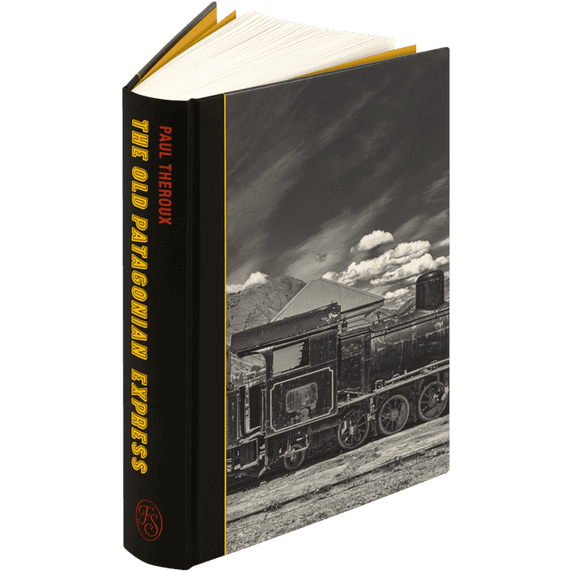
One of the greatest travelogues of the 20th century, Paul Theroux’s The Old Patagonian Express is newly presented as a Folio edition featuring an exclusive new introduction by the author and 24 original colour photographs.
Introduced by Kwame Dawes
Narrative of the Life of Frederick Douglass is the powerful memoir of an American slave, published with photographic portraits and a new introduction exclusive to the Folio edition.
‘Classic and elegant in its simplicity and its gripping readability.’
- Henry Louis Gates, Jr
Born into slavery in Maryland, Frederick Douglass escaped bondage to become an abolitionist leader, orator and politician, and one of the most famous African-Americans of the 19th century. His autobiographical Narrative – an immediate bestseller in 1845 – was soon acknowledged as a pivotal text in the struggle against slavery. In this moving and beautifully written account, he lays bare a system that brutalised everyone it touched. Douglass tells of his childhood and youth under a succession of slaveholders, his secret efforts to gain an education, his dawning political consciousness and his determination to escape. This definitive Folio edition includes the complete text of the Narrative, along with Douglass’s famous 1852 speech, ‘What to the Slave is the Fourth of July?’ Bound in striking gold cloth, it bears a photographic portrait of Douglass on the cover – one of eight chosen for the edition. In an exclusive new introduction, poet and literary critic Kwame Dawes emphasises how ‘the struggle for the equality of people of African descent in the United States and around the world make this work relevant today.’
Bound in printed and blocked gold cloth
Set in Bell
200 pages
Frontispiece plus 6 colour photographs
Blocked slipcase
8˝ x 5¼˝
‘Douglass is a masterful narrator, and one of the things he communicates is that slavery is not a sanitized form of forced labour, but first and foremost, a system of violence, an assault on black bodies, black families, and black institutions.’
- Ta-Nehisi Coates
Although the Narrative is a powerfully direct eyewitness account of slavery, Douglass knew the value of projecting his image to make the greatest impact – both with his life story and in the use of photography. He sat for more than 160 camera portraits, making him the most photographed man of the 19th century. Those included here, from various stages of his early life as he rose to become a great statesman, were ‘reproduced in newspapers, magazines, postcards, and posters’. Some were taken while he was still a fugitive slave, placing him in considerable peril, and according to Kwame Dawes’s incisive new introduction, they show how he ‘mobilized his image as a weapon, as an affront to white supremacy.’ The Folio edition closes with Douglass’s ‘Fourth of July’ speech, as delivered to the Rochester Ladies’ Anti-Slavery Society in New York, which forms a fitting complement to the Narrative. In a scintillating piece of oratory, he denounces the hypocrisy of a nation and a faith that celebrated liberty while denying it to an entire race.
As one of America’s foremost campaigners against slavery, Frederick Douglass often returned to his own life story. But the directness and immediacy of the Narrative – the only one of his three autobiographies written while he remained a slave – has established it as a classic. Many of its episodes lodge in the reader’s mind: the savage beatings meted out upon enslaved women; Douglass’s forced separation from his mother while still an infant, and her early death (‘I was not allowed to be present during her illness, at her death, or burial’); his tricking of white boys into helping him learn to read; and his victory over a notorious master in a fist fight, firing his determination to be free. Douglass relates all this with simplicity and poise, his matter-of-fact style letting the horrors of servitude speak for themselves.
